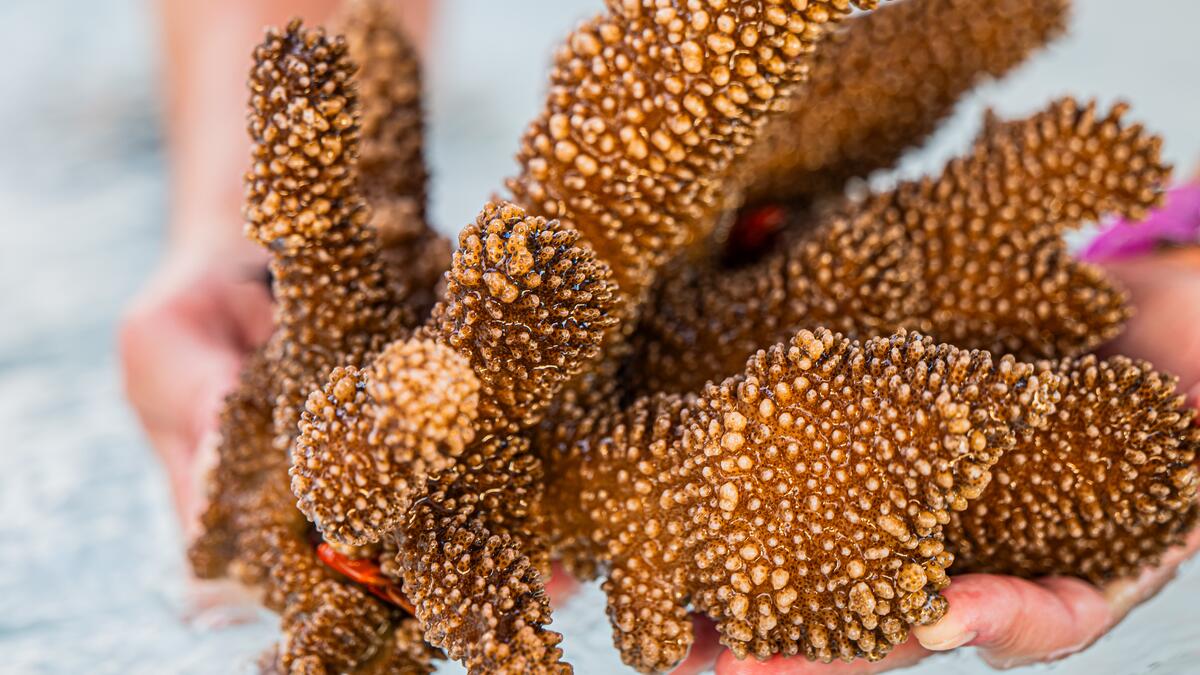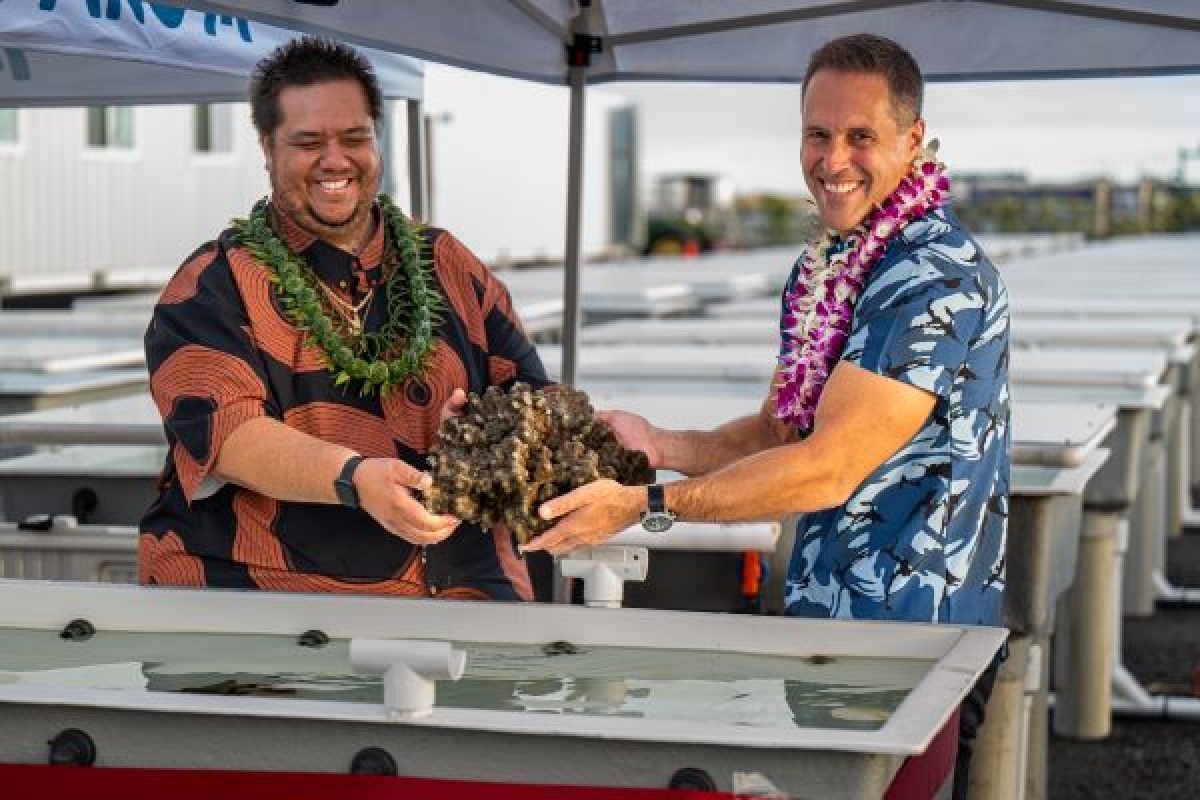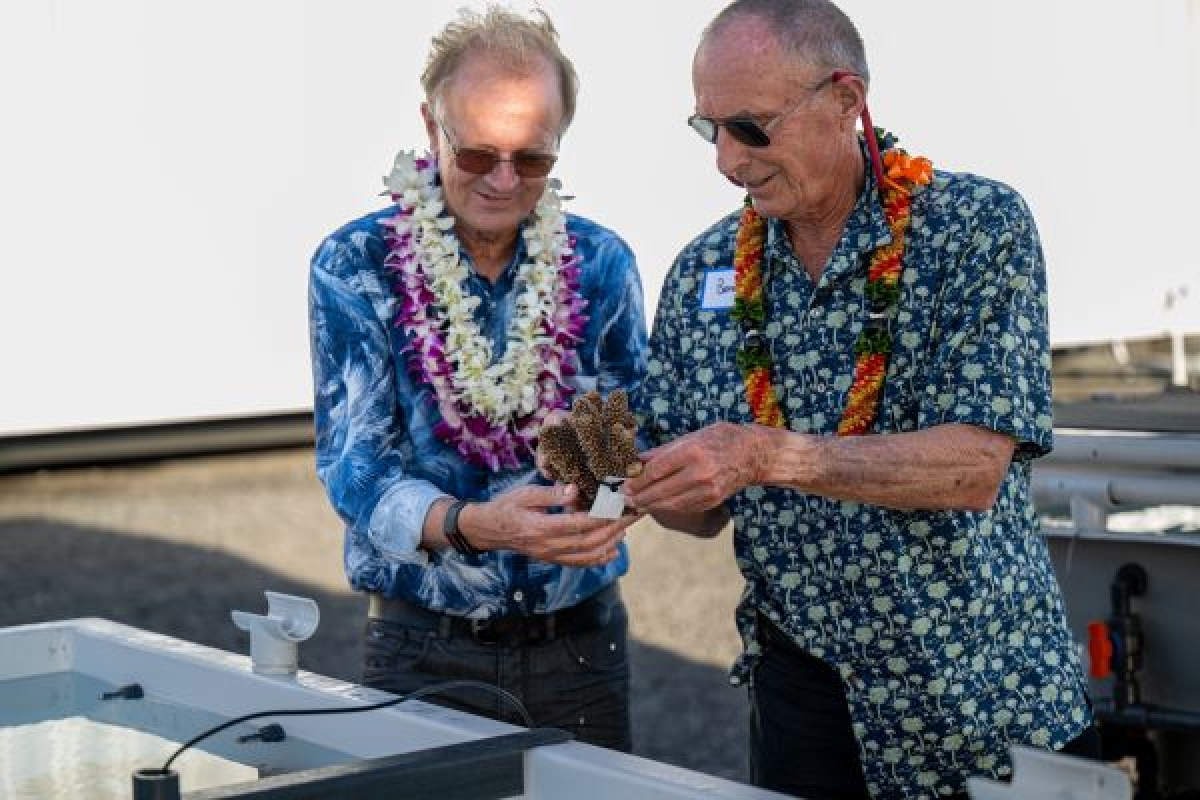Reef restoration program celebrates official opening of state-of-the-art coral reef facility

Photo by Matt Gutierrez
When the ʻĀkoʻakoʻa reef restoration program was established in 2023, it brought together decades of research, community partnerships and a commitment to healthy coral reefs in West Hawaii. On April 25, scientists and community members affiliated with ʻĀkoʻakoʻa celebrated an important expansion of the work done through this initiative: the official launch of a new, state-of-the-art coral research and propagation facility in Kailua-Kona.
A ribbon-cutting ceremony at the Ridge to Reef Restoration Center took place to celebrate the opening of the new facility. Greg Asner, director of Arizona State University’s Center for Global Discovery and Conservation Science and founder of ʻĀkoʻakoʻa, said the new facility will serve as a kind of medical facility for corals, housing broken corals that require care to recover, grow and reproduce.
Varying technical methods of coral reef restoration will take place in the coral nursery, led by team members from ASU, partners from the State of Hawaii’s Division of Aquatic Resources and other partners on the island. The facility consists of 72 coral raceways, or tanks, and is the first land-based coral nursery facility on the island. This facility will support the restoration of 120 miles of coral reefs off the west coast of the Big Island, which have been in decline for the past 50 years.
“We are here because Hawaii's coral reefs are in trouble,” Asner, also a senior Global Futures scientist with the Julie Ann Wrigley Global Futures Laboratory at ASU, said during the ceremony. “Our vision of a thriving coastline would be impossible to achieve without our generous donors, our site partners, our cultural advisory group, our community partners and everyone who has played a role. We have challenges ahead of us, but this is the ultimate winning team.”
The many ASU team members engaged with ʻĀkoʻakoʻa include molecular ecologists, remote sensing experts, dive teams, environmental educators, hydrologists and systems engineers. Asner said other ASU researchers and on-site collaborators will greatly contribute to the care of the corals that come into the facility: A diagnostics team will measure and monitor the reefs and water quality to diagnose the problems, and a restoration team will act on that diagnosis.
Jeana Kelekolio, a Native Hawaiian lineal descendant of Hōnaunau Bay and cultural advisor to ʻĀkoʻakoʻa, said that her family relies on the sea and its corals. With a decline in coral reef health and the rise of coral bleaching events, she has directly felt the impact.
“Our families from all over Hawaii can see the difference: Our fish are not there, our limu (seaweed) is gone,” she said. “But I am so excited to be here at this launch today. Our culture shouldn’t die with my 14-year-old grandsons — they should know how to survive and be cultural practitioners like me and my father before me. ... (They should know) how to take care of the ocean, the reef, the limu. We all have to work together as one family, for the greater good, for the future of our culture and for the future of tourism. I believe we can work hand in hand to make that happen.”
Peter Schlosser, the vice president and vice provost of Global Futures at ASU, said at the event that coral reefs are one of the most sensitive indicators of overall planetary health. The decline in coral reef health, he said, is directly tied to humanity pushing the boundaries of Earth’s life-supporting systems. However, this new facility represents a positive shift.
“We are in a situation where we need to change,” Schlosser said, “and what is being done here in Hawaii is a significant step forward. We see that reflected in the scale and holistic approach of this facility, but we also see it in the connectivity between the environmental and cultural value of coral reefs. I visited this site while it was under construction — to see this facility officially built is phenomenal.”
More Environment and sustainability

A 6-month road repair that only takes 10 days, at a fraction of the cost? It's reality, thanks to ASU concrete research
While Arizona’s infrastructure may be younger than its East Coast counterparts, the effects of aging in a desert climate have begun to take a toll on its roads, bridges and railways. Repairs and…

Mapping DNA of over 1 million species could lead to new medicines, other solutions to human problems
Valuable secrets await discovery in the DNA of Earth’s millions of species, most of them only sketchily understood. Waiting to be revealed in the diversity of life’s genetic material are targets for…

From road coatings to a sweating manikin, these ASU research projects are helping Arizonans keep their cool
The heat isn’t going away. And neither are sprawling desert cities like the metro Phoenix area.With new summer records being set nearly every year — 2024 was the warmest year on record for…



